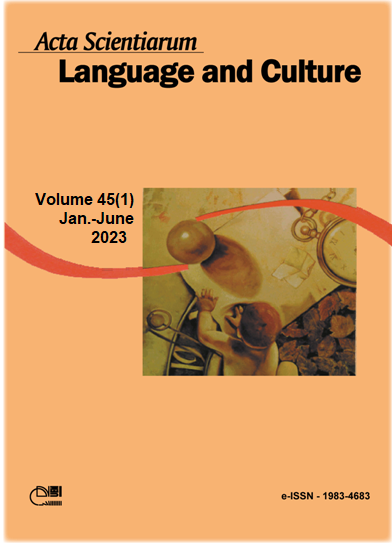A multimodal proposal for analysing narratives: gesture and eye-gaze in mental spaces marking
Abstract
The goal of this paper is to investigate, in multimodal data, the role of gesture and eye-gaze in Mental Spaces marking in narrative occurrences of Brazilian Portuguese. For this purpose, three excerpts from a personal narrative given by the Brazilian actress Marisa Orth, on GNT network TV Show ‘Que história é essa, Porchat?’ (How come, Porchat?) (Canal GNT, 2019), were selected from Youtube. In order to support the discussions theoretically, first, the relationship between mental spaces and multimodal articulators, gestures and the eye-gaze (Sweetser & Stec, 2016), was described and explained. In addition, it was presented the articulation between hand gestures and the marking of narrative levels – narrative, metanarrative and paranarrative – , as well as the marking of narrative viewpoints - the character viewpoint (C-VPT) and the observer viewpoint (O-VPT). Methodologically, we have analysed the lexical choices made on each occurrence (Dancygier, 2011), and then proceeded to the analysis of hand gestures, based on the identification and description of gestural strokes of the Linguistic Annotation System for Gestures (LASG) (Bressem, Ladewig, & Müller, 2013). The direction and function of the gaze in interactional contexts were also analysed. Finally, quantitative data on the duration of eye-gaze were described and interpreted. Results show that gestures and eye-gaze can both mark the same Mental Space (the Ground or the Narrative Space), as well as can simultaneously mark different Mental Spaces.
Downloads
Metrics
DECLARATION OF ORIGINALITY AND COPYRIGHTS
I Declare that current article is original and has not been submitted for publication, in part or in whole, to any other national or international journal.
The copyrights belong exclusively to the authors. Published content is licensed under Creative Commons Attribution 4.0 (CC BY 4.0) guidelines, which allows sharing (copy and distribution of the material in any medium or format) and adaptation (remix, transform, and build upon the material) for any purpose, even commercially, under the terms of attribution.
Read this link for further information on how to use CC BY 4.0 properly.




















6.png)









